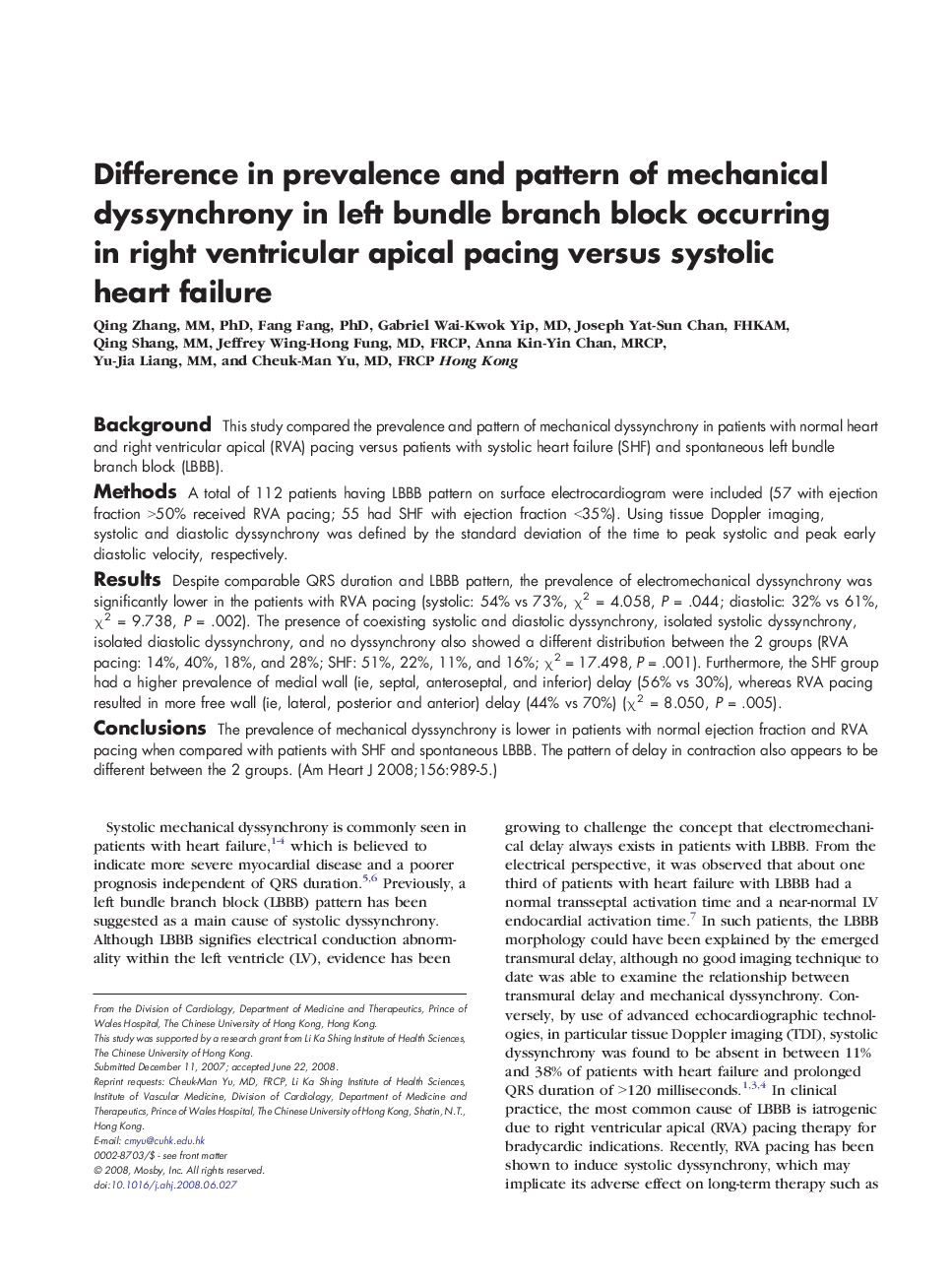| کد مقاله | کد نشریه | سال انتشار | مقاله انگلیسی | نسخه تمام متن |
|---|---|---|---|---|
| 2850710 | 1167804 | 2008 | 7 صفحه PDF | دانلود رایگان |

BackgroundThis study compared the prevalence and pattern of mechanical dyssynchrony in patients with normal heart and right ventricular apical (RVA) pacing versus patients with systolic heart failure (SHF) and spontaneous left bundle branch block (LBBB).MethodsA total of 112 patients having LBBB pattern on surface electrocardiogram were included (57 with ejection fraction >50% received RVA pacing; 55 had SHF with ejection fraction <35%). Using tissue Doppler imaging, systolic and diastolic dyssynchrony was defined by the standard deviation of the time to peak systolic and peak early diastolic velocity, respectively.ResultsDespite comparable QRS duration and LBBB pattern, the prevalence of electromechanical dyssynchrony was significantly lower in the patients with RVA pacing (systolic: 54% vs 73%, χ2 = 4.058, P = .044; diastolic: 32% vs 61%, χ2 = 9.738, P = .002). The presence of coexisting systolic and diastolic dyssynchrony, isolated systolic dyssynchrony, isolated diastolic dyssynchrony, and no dyssynchrony also showed a different distribution between the 2 groups (RVA pacing: 14%, 40%, 18%, and 28%; SHF: 51%, 22%, 11%, and 16%; χ2 = 17.498, P = .001). Furthermore, the SHF group had a higher prevalence of medial wall (ie, septal, anteroseptal, and inferior) delay (56% vs 30%), whereas RVA pacing resulted in more free wall (ie, lateral, posterior and anterior) delay (44% vs 70%) (χ2 = 8.050, P = .005).ConclusionsThe prevalence of mechanical dyssynchrony is lower in patients with normal ejection fraction and RVA pacing when compared with patients with SHF and spontaneous LBBB. The pattern of delay in contraction also appears to be different between the 2 groups.
Journal: American Heart Journal - Volume 156, Issue 5, November 2008, Pages 989–995